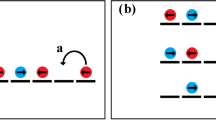Abstract
THERE is firm evidence that the characteristic changes of cell behaviour in vitro described as contact inhibition of locomotion1, contact inhibition of extension2 and contact inhibition of phagocytosis3 occur as a direct result of cell–cell contact. In addition it has been suggested4 that the inhibition of both pinocytosis5 and blebbiing6, in those regions of the margins of cells in contact with other cells, may also be a direct result of cell–cell contact. These examples may well be part of a general class of cell-contact-dependent phenomena which could play an important role in cellular interactions, I report here another contact-dependent reaction which takes place between chick embryo pigmented retina epithelial (PRE) cells in culture. In brief, it can be shown that the degree of polarisation exhibited by these cells and the degree to which they are spread on their substrate is influenced profoundly by whether or not they are in contact with other cells.
This is a preview of subscription content, access via your institution
Access options
Subscribe to this journal
Receive 51 print issues and online access
$199.00 per year
only $3.90 per issue
Buy this article
- Purchase on Springer Link
- Instant access to full article PDF
Prices may be subject to local taxes which are calculated during checkout
Similar content being viewed by others
References
Abercrombie, M., and Heaysman, J. E. M., Expl Cell Res., 6, 293–306 (1954).
Dunn, G. A., J. comp. Neurol., 143, 491–508 (1971).
Vasiliev, J. M., Gelfand, I. M., Domnina, L. V., Zacharova, O. S., and Ljubimova, A. V., Proc. natn. Acad. Sci. U.S.A., 72, 719–22 (1975).
Harris, A., in Cell Communication (edit. by Cox, R. P.), 147–185 (Wiley, New York 1974).
Abercrombie, M., and Ambrose, E. J., Expl Cell Res., 15, 332–345 (1958).
Harris, A. K., in Locomotion of Tissue Cells, Ciba Found. Symp. 14, 3–20 (Associated Scientific Publishers, Amsterdam and New York, 1973).
Middleton, C. A., in Locomotion of Tissue Cells, Ciba Found. Symp. 14, 251–262 (Associated Scientific Publishers, Amsterdam and New York, 1973).
Middleton, C. A., Expl Cell Res., 70, 91–96 (1972).
Stoker, M. G. P., Nature, 246, 200–203 (1973).
Curtis, A. S. G., Med. Biol. Illust., 10, 261–266 (1960).
Chalkley, H. W., J. natn. Cancer Inst., 4, 47–53 (1943).
Trinkaus, J. P., Devl Biol., 7, 513–532 (1963).
Garrod, D. R., and Steinberg, M. S., J. Cell Sci., 18, 405–425 (1975).
Author information
Authors and Affiliations
Rights and permissions
About this article
Cite this article
MIDDLETON, C. Contact-induced spreading is a new phenomenon depending on cell–cell contact. Nature 259, 311–313 (1976). https://doi.org/10.1038/259311a0
Received:
Accepted:
Issue Date:
DOI: https://doi.org/10.1038/259311a0
This article is cited by
-
Endoderm regeneration in the chick embryo studied by SEM
Anatomy and Embryology (1978)
-
Histological and cytological technique for the quantitation of cultured human bone-marrow cells: Formation of aggregates
In Vitro (1978)
-
Wound healing in the early chick embryo studied by scanning electron microscopy
Anatomy and Embryology (1977)
Comments
By submitting a comment you agree to abide by our Terms and Community Guidelines. If you find something abusive or that does not comply with our terms or guidelines please flag it as inappropriate.



